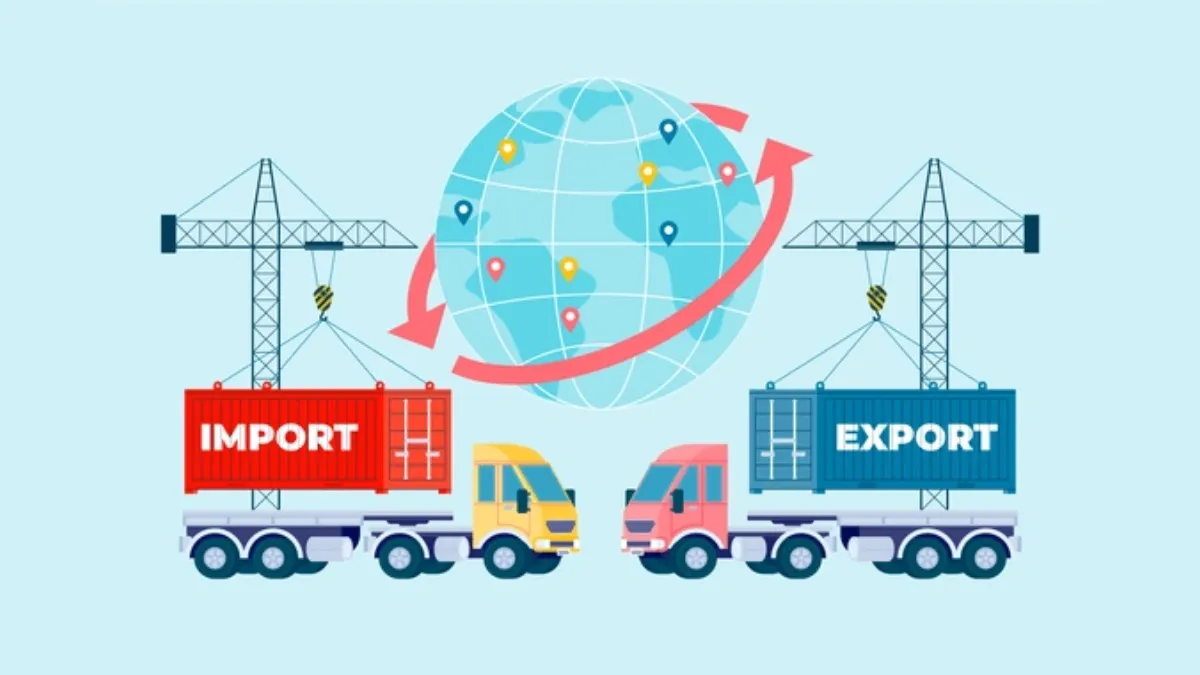India’s trade story has evolved from the bustling bazaars of ancient times to today’s digital marketplaces, where goods and services move at the speed of light. Once famed for its spices, India has now morphed into a tech and services giant. From the early 2000s, with exports of just US $44 billion, India has exploded onto the global trade scene, surpassing US $450 billion today. It’s been a wild ride, and the best is yet to come.
Back in the day, India was known for its textiles and gems, and while those vibrant sarees are still being shipped worldwide, the country’s tech sector has taken over the limelight. India’s IT services now account for nearly 40% of its total exports, and the country has become the world’s go-to helpdesk. From software development to fintech, India’s brainpower is pulling in US $150 billion annually in service revenue. Not bad for a country that once relied mostly on fabrics and gemstones.
India’s pharmaceutical industry is another star player. If you’ve taken a generic pill recently, there’s a good chance it came from India. The country supplies over 50% of the world’s vaccines and medicines and took centre stage during the pandemic, delivering essential medical supplies to more than 100 countries. From the “pharmacy of the world” to an IT powerhouse, India’s exports are diversifying faster than your Netflix queue.
India’s import landscape is characterised by a significant dependence on crude oil, ranking as the world’s third-largest oil importer, while simultaneously exhibiting a burgeoning demand for high-tech goods. Semiconductors, electronic components, and solar panels are all being imported in large quantities, fueling India’s tech and clean energy revolution. The country’s focus on boosting domestic manufacturing has been ramping up too, with new initiatives pushing for more self-reliance.
Trade deals have been key to India’s recent EXIM (Export-Import) success. Free Trade Agreements (FTAs) with Japan, South Korea, and ASEAN countries have opened up markets for Indian goods and services. Now, the country is looking to Europe and Africa as potential trade partners, aiming to reduce its dependency on traditional powerhouses like the U.S. and China. It’s like India’s building its own diverse trading playlist, mixing in a little bit of everything.
But not everything’s been smooth sailing. In 2016-17, India’s exports were around US $276 billion, while imports stood at US $384 billion. The trade deficit wasn’t exactly pretty, and the gap was widening faster than the plot of a telenovela. Imports of oil, machinery, and gold were essential, but India knew it needed a change.
By 2020-21, things started heating up. The pandemic brought global chaos, but it also spotlighted India’s pharmaceuticals, electronics, and renewable energy sectors. Exports hit US $292 billion, and though imports were still high at US $393 billion, India was beginning to gain control of its narrative. The government’s “Aatmanirbhar Bharat” (Self-Reliant India) campaign further accelerated the push for local production, making a significant impact on the economy.
Now, fast forward to 2023-24, and India’s EXIM story is looking like a box-office hit. Exports reached US $440 billion, with services contributing a whopping US $325 billion. Imports, meanwhile, were balancing around US $700 billion. India is cementing itself as a tech powerhouse, and sectors like pharmaceuticals, IT, and agriculture are all flourishing. For example, India’s grains—rice, wheat, and sugar—are feeding millions around the world, making the country a major player in the global food market.
A quirky twist in India’s trade journey? Mango diplomacy! India’s prized Alphonso mangoes have been used to sweeten trade ties with countries like Japan and the UAE. These mangoes aren’t just delicious—they’re a symbol of goodwill, gifted to dignitaries to strengthen relationships. So, the next time you bite into an Alphonso, you’re tasting more than fruit—you’re savouring diplomacy.
Looking ahead to 2025, India’s trade future seems as bright as a Diwali night. With initiatives like “Make in India” and the Production-Linked Incentive (PLI) scheme, the country is positioning itself as a manufacturing hub for electric vehicles, electronics, and renewable energy. India is aiming for US $500 billion in exports by 2025, with a strong focus on green technology and digital transformation. This is where the next wave of growth will come from—clean energy, smart tech, and sustainable manufacturing.
There are still some challenges to overcome. India’s infrastructure, including ports and road networks, is playing catch-up, and the heavy reliance on energy imports remains an issue. However, initiatives like the Sagarmala project, aimed at modernising ports, and Bharatmala, focused on improving roadways, are set to smooth out these bumps in the road. With these upgrades, India’s goods will be flowing in and out more smoothly than ever.
India’s EXIM journey has been one of constant transformation. From ancient spice routes to modern tech hubs, the country’s trade story is a testament to innovation and resilience. As it gears up for 2025, expect more growth, new partnerships, and plenty of unexpected twists—maybe even with a side of mangoes. Whether it’s exporting software or solar panels, India’s trading future is looking brighter every day.

